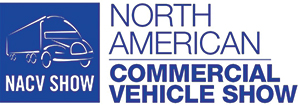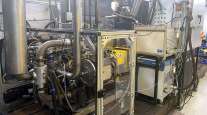Senior Reporter
NACFE Run On Less Regional Demonstration Achieves 8.3 MPG Average

[Stay on top of transportation news: Get TTNews in your inbox.]
ATLANTA — Over the course of 18 days, trucks participating in a demonstration by the North American Council for Freight Efficiency showed significant improvements in fuel efficiency through investments in technology and skilled drivers.
In NACFE’s “Run On Less Regional,” the participating 10 trucks achieved 8.3 miles per gallon, a mark higher than the national average of about 6 mpg. The group announced the findings at the North American Commercial Vehicle Show here on Oct. 27.
The participants saved 2,750 gallons of fuel, $8,249, and 27.9 tons of carbon dioxide during the demonstration. NACFE suggested that if all regional carriers were able to reach this 8.3 mpg benchmark, more than $9 billion in annualized savings could be realized.
“Going into the Run, we had no idea what to expect in terms of just how fuel-efficient these fleets could be,” said Mike Roeth, NACFE’s executive director. “The numbers these trucks and drivers put up demonstrate that it is possible to achieve high mpgs in regional operations.”
Other takeaways from the 18-day demonstration were that high-efficiency necessitates a commitment from fleet leadership and drivers. Big data and connectivity are useful to further optimize routes. And, an expansion of regional haul is likely to assist in attracting and retaining drivers. Additionally, regional haul is ideal for alternative-fuel vehicles such as battery electric trucks, NACFE indicated.
Run On Less Regional participants included C&S Wholesale Grocers, Hirschbach, Hogan Transportation, J.B. Hunt, Meijer, PepsiCo, Ploger Transportation, Schneider, Southeastern Freight Lines and UPS. The 10 trucks engaged in real-world regional haul operations.
“With a growth in regional haul, it is important that the trucking industry focus on making this sector as efficient as possible,” said David Hoover, director of outbound logistics at Meijer. “What we all learned here with respect to the various duty cycles and driver performance is crucial to designing tractors, trailers, routes, etc., to dramatically lower the carbon footprint of North American goods movement.”
.@NACFE recognizes the truck drivers who participated in the 18-day #RunOnLess regional program. #NACVShow2019 pic.twitter.com/FmmjQDZ7hx — Seth Clevenger (@SethClevenger) October 27, 2019
Going forward, NACFE intends to “help the industry with future products,” Roeth told reporters at NACV. “So we’ve already begun work on electric trucks and in [2020-’22], expect us to really dive into electric trucks and regional haul.
“This is fertile ground for that because of their return to base. We believe that’s [an] important place for us to work on, so we expect to do that,” he added.
Shell was a sponsor of the Run On Less demonstration. John Walters, marketing manager for the global fleet sector, explained the missions of NACFE and Shell were an ideal match.
“At Shell, for example, we are trying to educate people on the energy transition. So we know over the next 20, 30 years — whatever it is — that the world is going to need a lot more energy, but we need it to be sustainable and we need it to be done in a responsible manner,” Walters told Transport Topics after NACFE announced its findings.
“Even with today’s technology, today’s drivers, we can do a lot better and we just proved it. And to me that’s a wonderful story. We don’t need to wait for some amazing technology to come out in five years for us to do better. It’s achievable now.”
Want more news? Listen to today's daily briefing:





